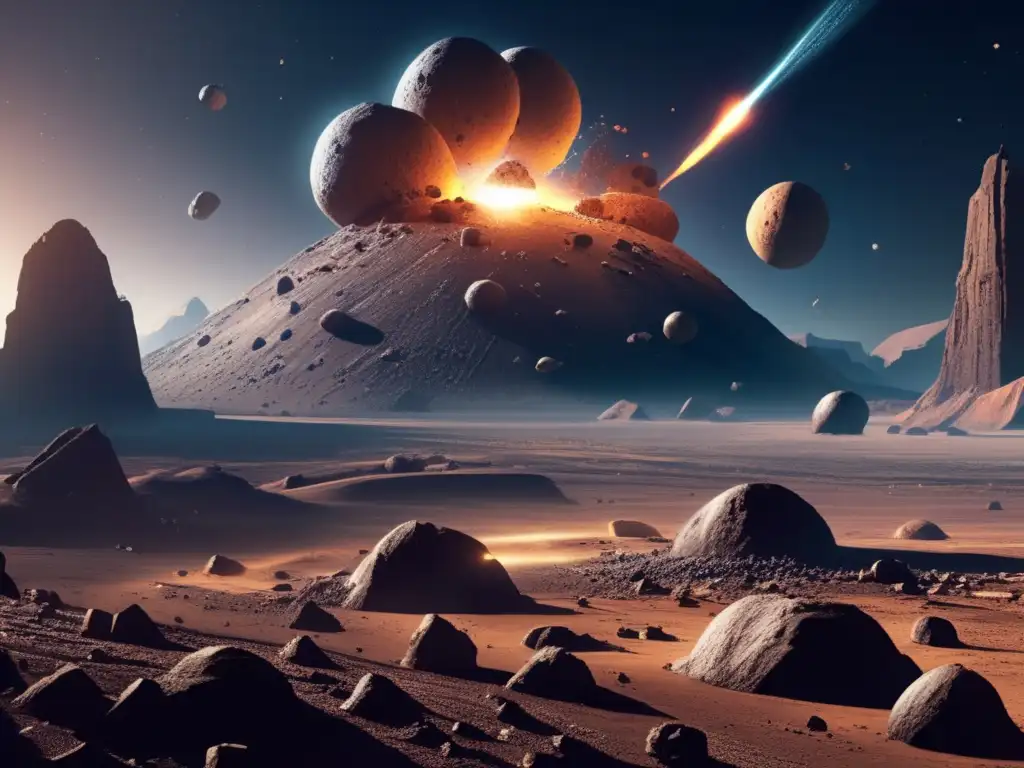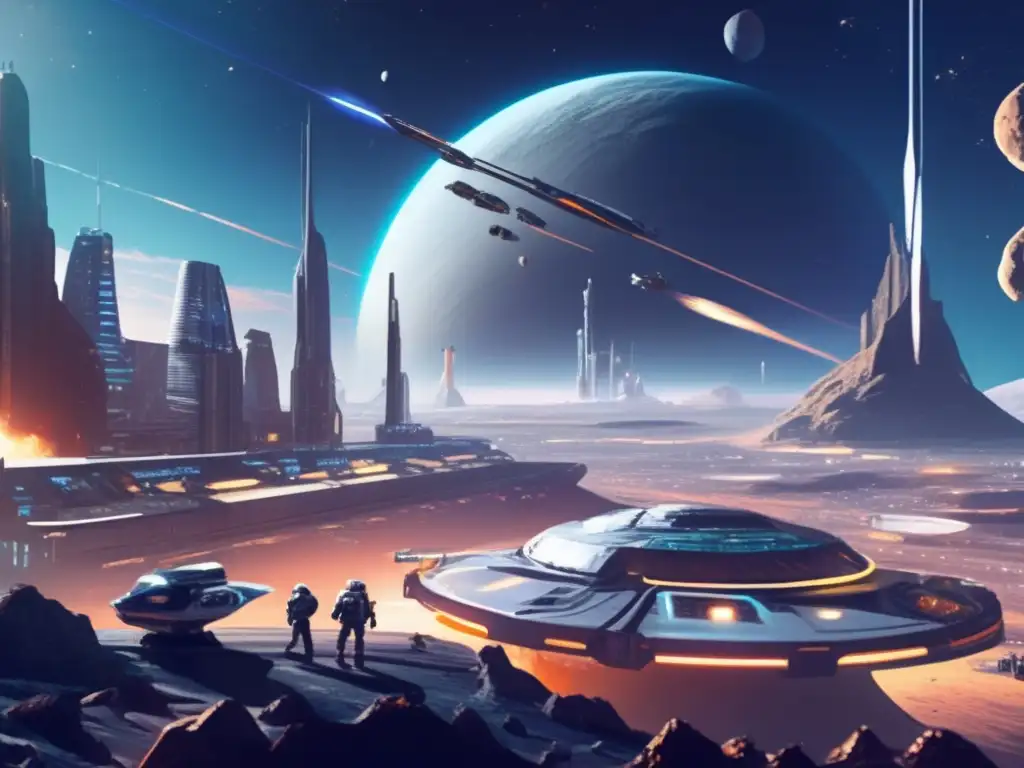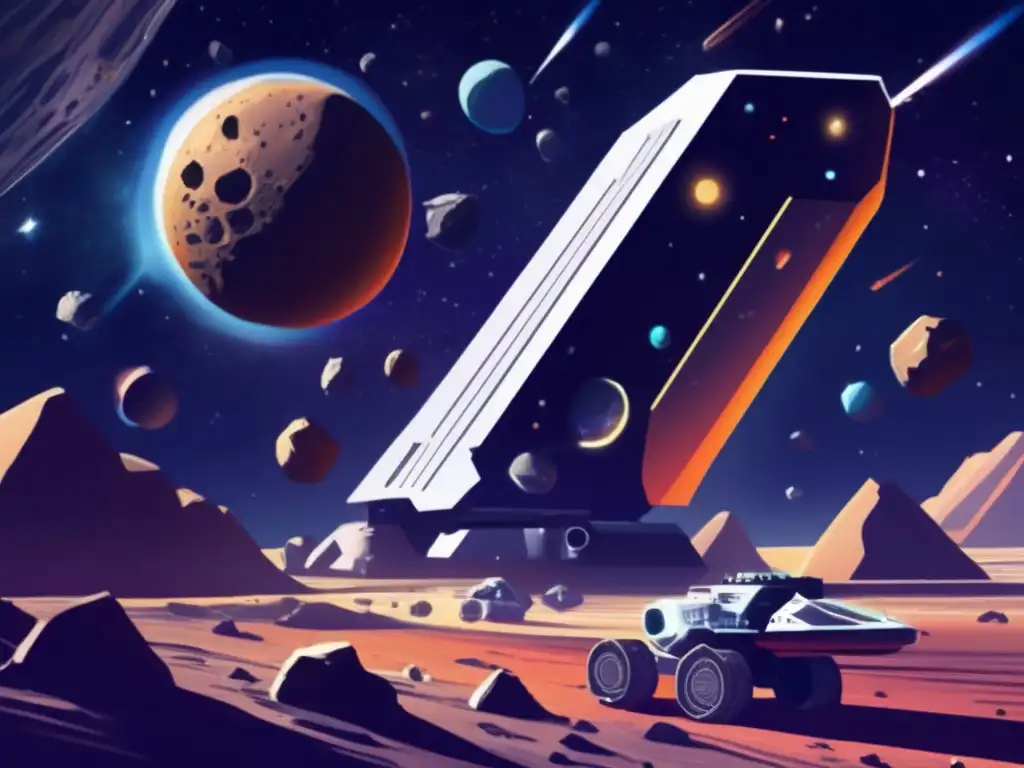Beyond Earth: Mining The Cosmos

Introduction
Asteroid mining, also known as space mining, is an emerging industry that aims to extract valuable resources from asteroids. As humans continue to explore outer space, the potential for utilizing asteroids as a source of minerals and rare metals becomes increasingly promising. This article will delve into the possibilities of asteroid mining, its challenges, and the potential economic and technological implications.
The Benefits of Asteroid Mining

Unlocking Potential Resources
Asteroids are believed to contain vast amounts of valuable resources such as platinum, gold, iron, and nickel. These resources can be used in various industries, including space exploration, manufacturing, and energy production. Mining asteroids could provide a sustainable and virtually endless supply of these resources, reducing dependence on Earth's limited reserves.
Advancing Space Exploration
By mining asteroids, we can establish a robust infrastructure in space, enabling us to explore further into our solar system. The resources extracted from asteroids can be used to refuel spacecraft, manufacture equipment and habitats, and support long-duration missions. Asteroid mining could serve as a stepping stone for human colonization of other celestial bodies.
Protecting Earth
Some asteroids pose a potential threat to Earth if their trajectories bring them too close to our planet. By mining these Near-Earth asteroids, we can divert their paths and potentially prevent catastrophic collisions. Furthermore, studying asteroids can enhance our understanding of their composition and behavior, aiding in the development of effective planetary defense strategies.
The Challenges of Asteroid Mining

Technological Hurdles
Asteroid mining presents numerous technological challenges. Extracting resources from asteroids requires advanced drilling and extraction techniques that can operate in a microgravity environment. Developing efficient methods for ore processing, refining, and storage in space is crucial. Additionally, transportation of mined materials back to Earth or other destinations adds another layer of complexity.
Legal and Regulatory Frameworks
The legal aspects of asteroid mining are still evolving. International agreements, such as the Outer Space Treaty, prohibit nations from claiming celestial bodies as their own. However, private companies are exploring legal frameworks that allow them to exploit asteroid resources while adhering to international guidelines. Establishing a fair and equitable governance structure for asteroid mining is vital to avoid conflicts and ensure responsible resource utilization.
Cost and Funding
Asteroid mining is a capital-intensive endeavor that requires substantial investments. The high costs associated with research, development, and launching missions to asteroids pose a significant challenge. Securing funding and attracting investors, both private and governmental, is essential for advancing the field and overcoming financial obstacles.
The Future of Asteroid Mining

Spacecraft and Exploration Technologies
Ongoing technological advancements in spacecraft design and propulsion systems will play a crucial role in the future of asteroid mining. The development of reusable rockets and innovative propulsion methods will reduce launch costs and allow for more frequent and cost-effective missions to asteroids. Robotics and autonomous systems will also be integral to conducting mining operations in space.
In-Situ Resource Utilization (ISRU)
In-situ resource utilization refers to utilizing local resources found in space rather than transporting everything from Earth. ISRU techniques will be essential for sustainable asteroid mining. Researchers are exploring methods for extracting water ice from asteroids, which can be used for life support, fuel production, and the creation of breathable environments in space.
Collaboration and Partnerships
The future of asteroid mining relies on international collaboration and partnerships between governments, private companies, and research institutions. Sharing knowledge, resources, and expertise will accelerate progress in this field. Collaborative efforts can also help address the challenges associated with legal frameworks, funding, and technological advancements.
Frequently Asked Questions

-
What resources can be mined from asteroids?
Asteroids contain valuable resources such as platinum, gold, iron, and nickel. Additionally, some asteroids may harbor water ice, which can be crucial for supporting future space missions.
-
How do we extract resources from asteroids?
Extraction methods vary, but they often involve drilling or blasting the asteroid's surface to release the desired materials. Robotic mining systems can then collect and process the extracted materials.
-
Can asteroid mining prevent asteroid impacts on Earth?
While it is challenging to mitigate all potential threats, mining asteroids can help us study their composition and behavior, allowing us to develop strategies to deflect or divert asteroids that might pose a risk to Earth.
-
Is asteroid mining economically viable?
Asteroid mining is still in its early stages, and economic viability depends on various factors, including resource availability, technological advancements, and market demand. However, the potential value of asteroid resources makes it an attractive long-term investment.
-
What are the environmental implications of asteroid mining?
Environmental impact studies are necessary to assess the potential effects of asteroid mining. It is crucial to develop responsible mining techniques that minimize any negative consequences on space environments and planetary bodies.
Conclusion
Asteroid mining holds great promise for humanity's future in space. The potential resources hidden within these celestial bodies could revolutionize our ability to explore and utilize space. However, significant challenges remain, requiring innovative solutions, collaboration, and investment. By venturing beyond Earth and mining the cosmos, we can unlock new frontiers and pave the way for a vibrant spacefaring civilization.
We encourage you to share your thoughts and engage with www.asteroidrealm.com. Subscribe to our updates, share this article on social media, and participate in the discussions. We appreciate your time and support as we delve into the fascinating world of asteroids.
Additional Resources

For further reading on asteroid mining and related topics, please visit the following resources:
 Challenges And Solutions In Asteroid Mining
Challenges And Solutions In Asteroid Mining Commercial Opportunities In Asteroid Mining
Commercial Opportunities In Asteroid Mining Ecological Considerations In Asteroid Mining
Ecological Considerations In Asteroid MiningIf you want to discover more articles similar to Beyond Earth: Mining The Cosmos, you can visit the Asteroid Mining and Resources category.
Leave a Reply

Articulos relacionados: